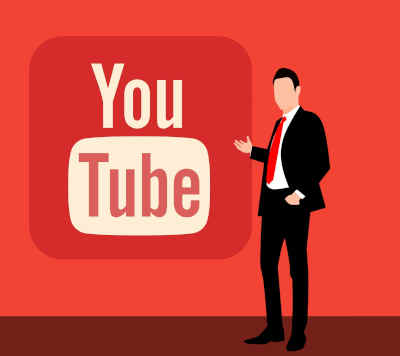Copyright and YouTube videos
Fact sheet P-30
Issued: 6th April 2020 Last amended: 6th April 2020
Fact sheet P-30: Copyright and YouTube videos
 Over the last 2 decades, YouTube has transformed the landscape of film making and video publishing; allowing anyone to become a video content producer. For many, producing videos for YouTube has become a lucrative, full-time business.
Over the last 2 decades, YouTube has transformed the landscape of film making and video publishing; allowing anyone to become a video content producer. For many, producing videos for YouTube has become a lucrative, full-time business.
In this fact sheet we attempt to cover the issues affecting YouTube and content makers publishing on YouTube, the measures that video makers should take to be compliant, and the steps to take when infringements occur.
- Limited liability of the platform provider
Any online platform that allows people to upload content will always run the risk of someone uploading material that infringes copyright through no fault of the platform. Because of this, most jurisdictions recognise what is commonly called a "safe harbour", where the platform operators (e.g. YouTube) are protected from liability for what their users upload.
To benefit from this, they need to provide a way for rights owners to complain, and have in place a procedure to deal with complaints and remove infringing material in a timely manner once notified. They can therefore potentially become liable if they knowingly allow an infringement to continue.
- Liability of the content maker
As a video maker you should ensure that what you publish on YouTube is legal and does not infringe the rights of other parties. Failing to do so will result in the videos being removed, strikes against your YouTube account or complete banning/removal of your account, and leaves you open to legal action (including claims for financial damages) from the rights owner.
Please see our fact sheet P29: Video copyright for more information on this subject.
- Copyright infringement on YouTube
YouTube adheres to the US 1988 Digital Millennium Copyright Act (DMCA). It provides a way for owners to notify them of infringements so that they can be taken down (with a right to appeal).
YouTube copyright infringement claim procedure can be summarise as follows:
-
The copyright owner makes a formal complaint using the YouTube takedown form.
This will normally result in the video being taken down.
(Please note that using this form is starting a legal process and not something to be used lightly or maliciously).YouTube will notify the alleged offender, who has 2 options:
-
Accept the take down, or
-
File a counter notice, signed under pain of perjury, stating that they are not infringing, giving reasons, and indemnifying YouTube for any liability.
If a counter notice is filed, then YouTube will restore the video. It would then be up to complainant to decide if they wish to pursue the matter further; by taking formal legal action to get the video removed (i.e. an injunction) and suing for damages where applicable.
-
-
- YouTube "Content ID"
YouTube also operate a system called Content ID that copyright owners can join.
When a video is uploaded to YouTube, it is scanned against an existing database of videos that have been submitted in the past. If the upload video is matched against existing works in the database, a Content ID claim is issued on behalf of the copyright owner.
Depending on the copyright owner's wishes, the video may be blocked (or blocked on certain platforms or in certain countries), or may be shown with ads – with the advertising revenue going to the copyright owner.
The person that uploaded the video has a right to appeal if they believe the work has been misidentified or a fair use exception applies (see full details).
- Fair Use defence
Most national laws have a concept of 'Fair Use', or 'Fair Dealing' that allows re-use of a copyright work under specific situations without needing the permission from the copyright owner. You should note however that these will vary from country to country. You will be subject to the law of your own country.
If uploading content to a platform such as YouTube, you should also be aware that as a US company, they are subject to US laws; so it is worth familiarising yourself with the terms of this.
Section 107 "Limitations on exclusive rights: Fair use" of the US Copyright Act states:
"for purposes such as criticism, comment, news reporting, teaching (including multiple copies for classroom use), scholarship, or research, is not an infringement of copyright”...
"In determining whether the use made of a work in any particular case is a fair use the factors to be considered shall include—
(1) the purpose and character of the use, including whether such use is of a commercial nature or is for nonprofit educational purposes;
(2) the nature of the copyrighted work;
(3) the amount and substantiality of the portion used in relation to the copyrighted work as a whole; and
(4) the effect of the use upon the potential market for or value of the copyrighted work."Please see https://www.copyright.gov/title17/92chap1.html#107 for full details.
- Strikes system
YouTube also implements a "3 strikes" system to stop repeat offenders. A strike is made against on your account if you make a copyright violation and remains there for 90 days, if you get 3 strikes on your account then you risk your account being permanently deleted.
